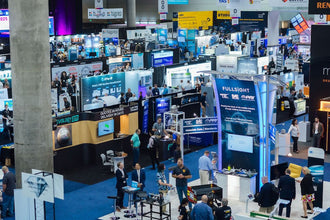3D Printing Technology: Elevating Rocket Development to New Heights
Innovation in aerospace is advancing at an unprecedented pace across the globe. As a rapidly emerging manufacturing technology, 3D printing is gradually transforming the way rockets are developed, enabling engineers to turn their ideas into reality faster and at a lower cost. This September, we were honored to collaborate with Skyward, a renowned student rocket team from Italy. We provided them with our S1 Delta Structure 3D printer to support their future rocket design and development.
Meet Skyward: A Student Rocket Team Driven by Innovation and Passion
Skyward is a dynamic student rocket team known for its adventurous spirit and constant innovation. Since its inception, the team has stood out in international competitions, designing and building rockets that push the boundaries of technology. In October this year, Skyward’s latest rocket, “Lyra,” won first place at Europe’s most influential student rocket competition. Some of the components of the Lyra rocket were created using 3D printing, showcasing the immense advantages of this technology in rocket development.
For a field that requires continuous design validation and refinement, 3D printing enables teams to save significant time and costs on prototyping and testing. Our equipment will support Skyward’s innovative experiments, helping them develop prototypes for new designs more efficiently.
How 3D Printing Accelerates Rocket Development
In traditional manufacturing processes, designing and producing rocket parts is often a complex, time-consuming, and costly endeavor, especially for intricate geometries and small-batch high-precision components. With 3D printing, engineers can quickly create high-precision prototype parts and make repeated adjustments to the design as needed. This rapid iteration capability provides rocket development teams with greater flexibility, allowing them to conduct more tests and make improvements within tight project timelines.
Beyond producing complex parts, 3D printing also reduces material waste and lowers production costs. This is particularly important for student teams like Skyward, who often lack the resources to create expensive metal components. With 3D printing, the team can produce functional prototype parts from more affordable materials, speeding up the development process. For example, some of the test parts used in Skyward’s Lyra rocket this year were 3D printed, significantly accelerating the project’s progress and enabling the team to quickly validate the feasibility of their ideas during the design and testing stages.
The Role of FLSUN’s S1 Printer in Future Rocket Development
FLSUN’s S1 3D printer is a high-speed, high-precision delta-style machine, capable of printing at speeds of up to 1200mm/s and accelerations of up to 40,000mm/s², making it ideal for rapid iteration in R&D projects. Skyward plans to use the FLSUN S1 printer after this year’s rocket competition to support the development of their next-generation rockets. We are confident that this efficient machine will allow Skyward to make greater breakthroughs in prototype production and further enhance their design and manufacturing capabilities.
In future rocket projects, Skyward will be able to use the FLSUN S1 to quickly print prototype parts that meet design specifications, which will be used for design validation and functional testing. With these precision-printed components, the team can make design changes more efficiently and adjust their plans based on test results, enabling them to optimize the overall rocket design in a more flexible manner. This will save Skyward considerable time and manpower costs, allowing them to pursue technological innovation with limited resources.
The Future of 3D Printing and Rocket Development
The rapid development of 3D printing technology is unlocking unprecedented opportunities for the aerospace industry. From prototype design validation to the mass production of functional components, 3D printing is steadily becoming one of the key technologies in rocket design and manufacturing. For student teams and research organizations, 3D printing offers the chance to explore innovative rocket structures at a lower cost, shorten project timelines, and improve R&D efficiency.
FLSUN is excited to be part of this technological revolution and collaborate with innovative teams like Skyward. Moving forward, we will continue to provide high-speed, efficient 3D printers to help more rocket teams and space enthusiasts achieve their dreams. We believe that as 3D printing technology advances, it will play an increasingly crucial role in aerospace
and other high-tech fields.
Learn more about FLSUN S1: https://us.store.flsun3d.com/products/flsun-s1
Learn more about Skyward: https://skywarder.eu/









